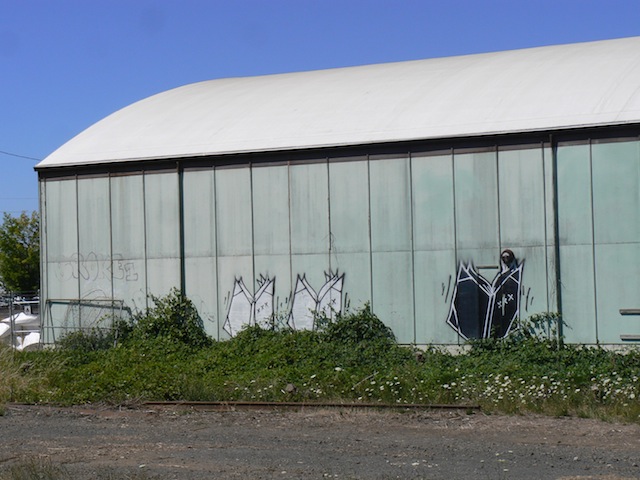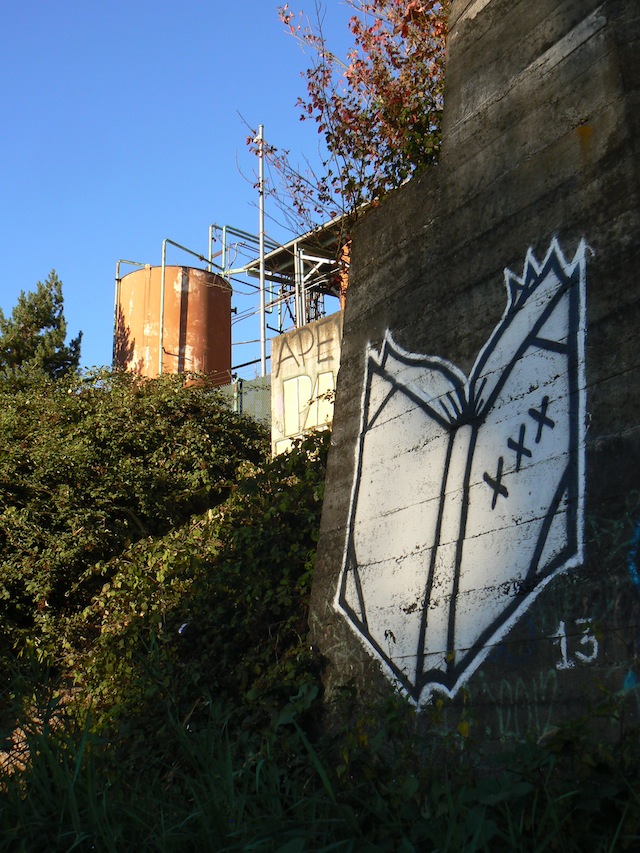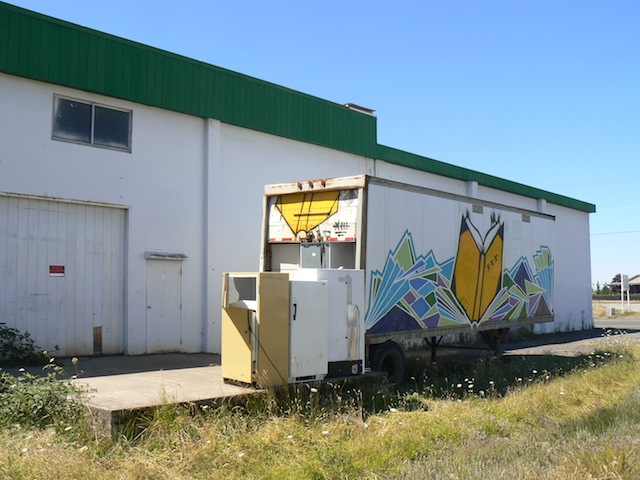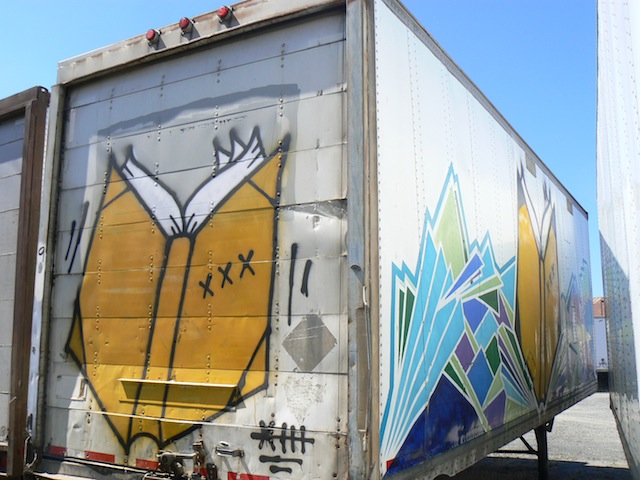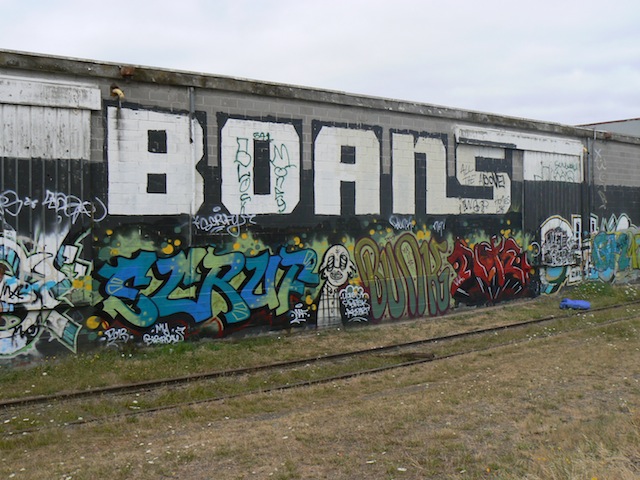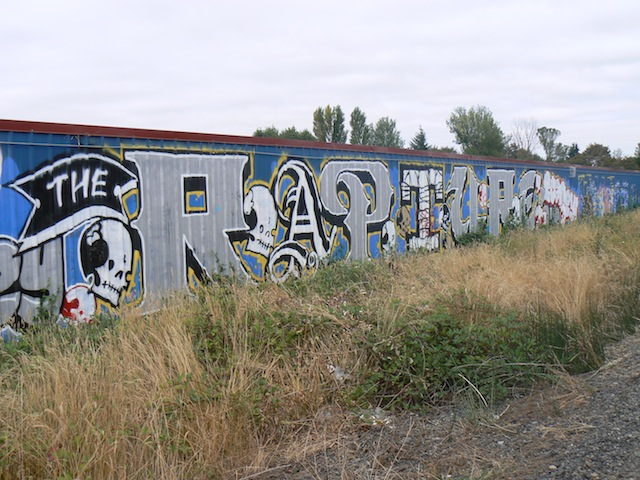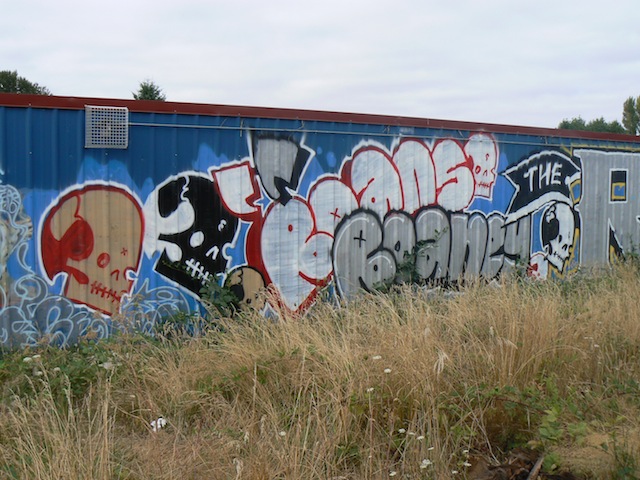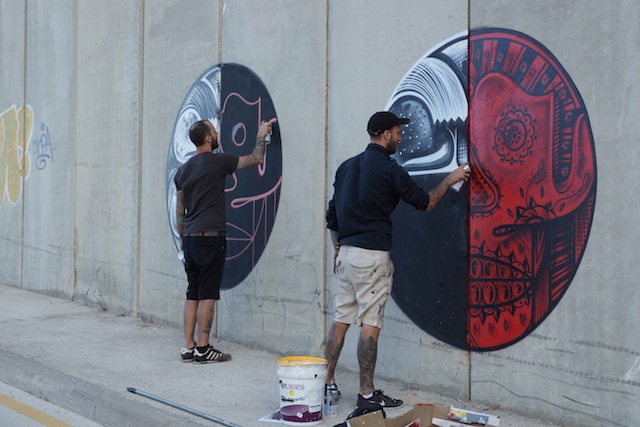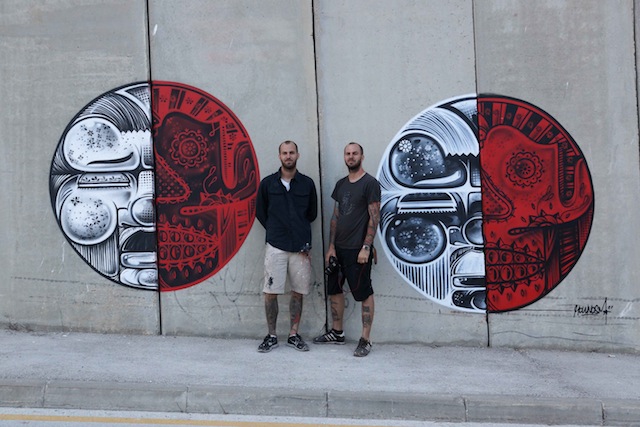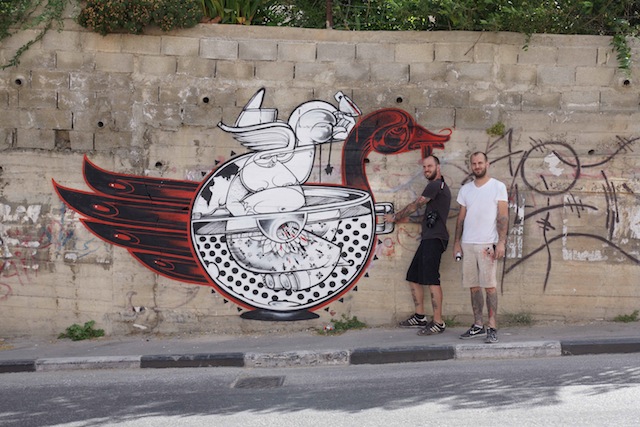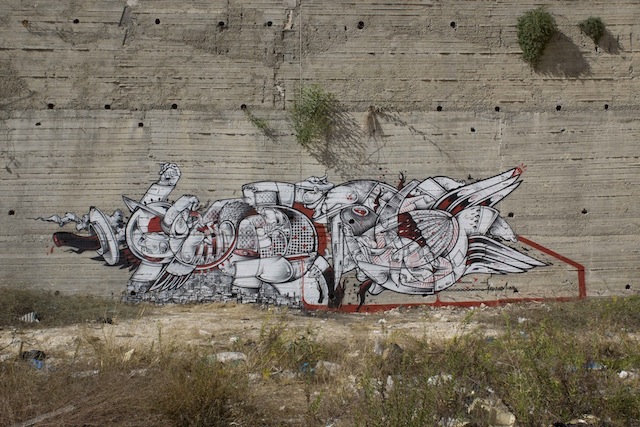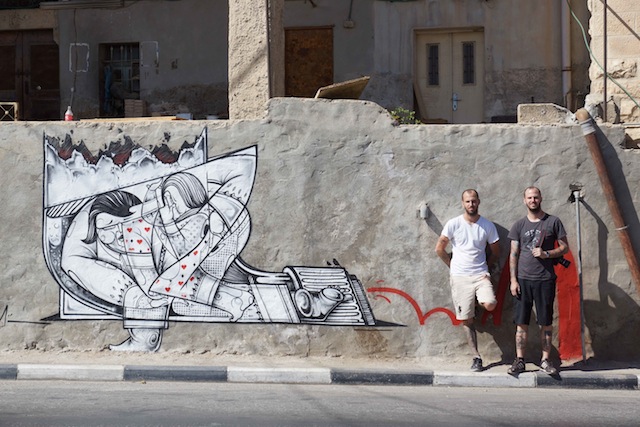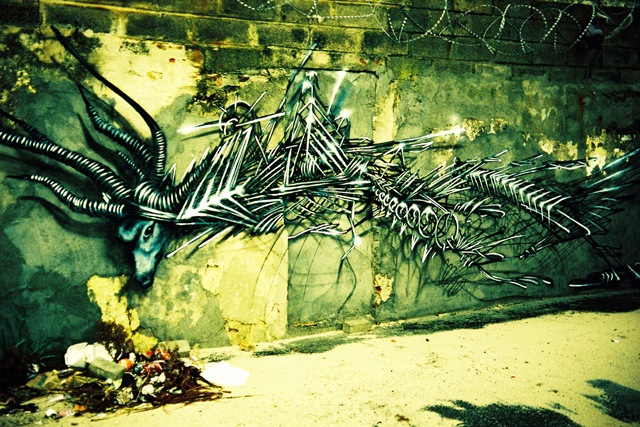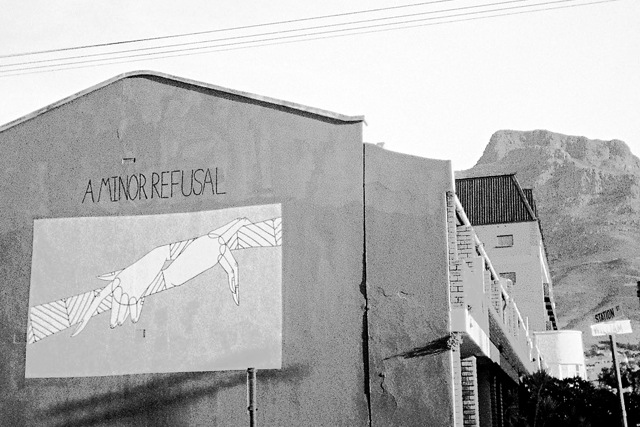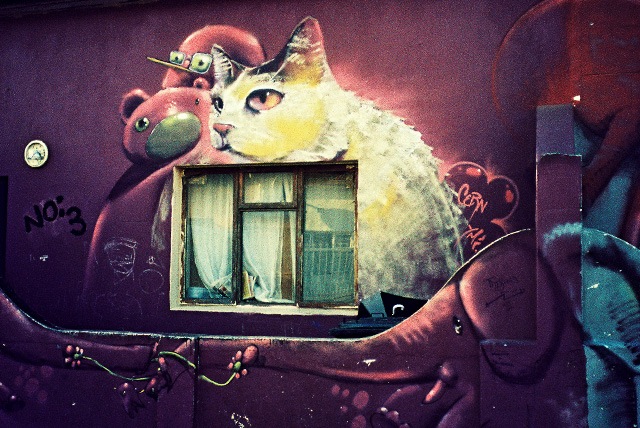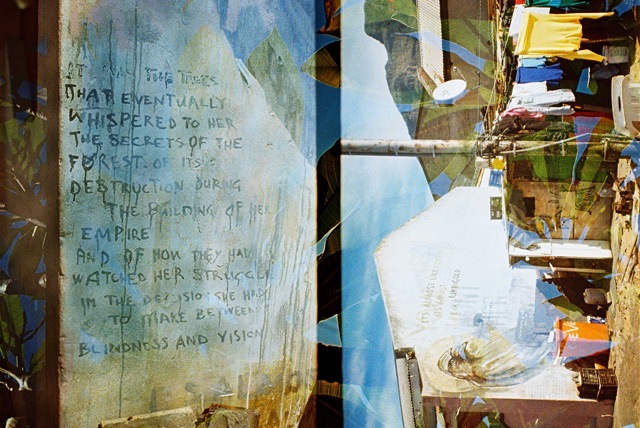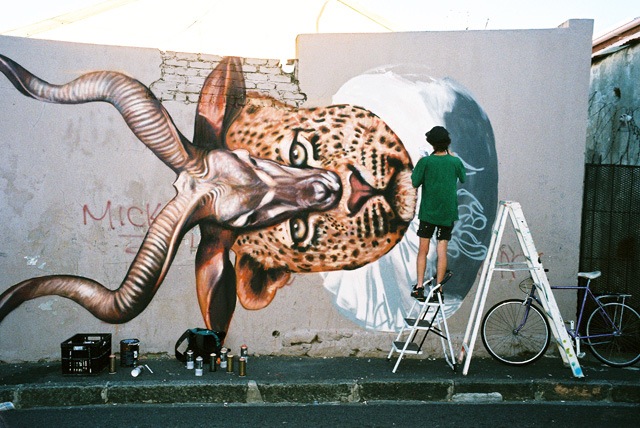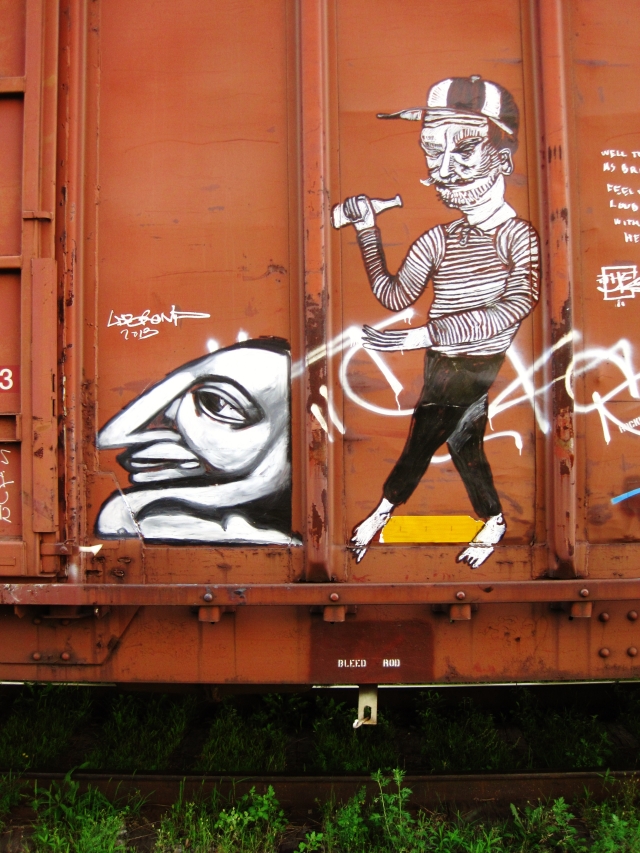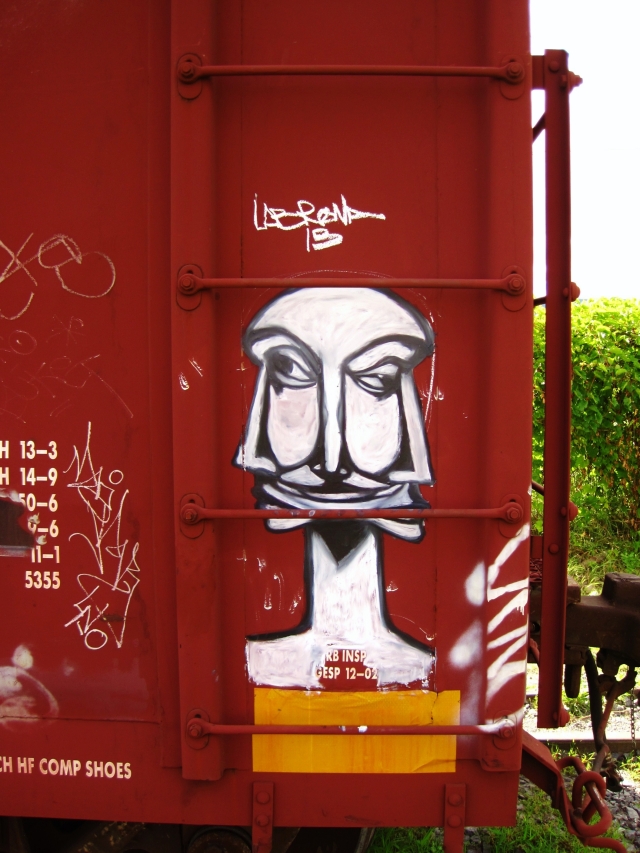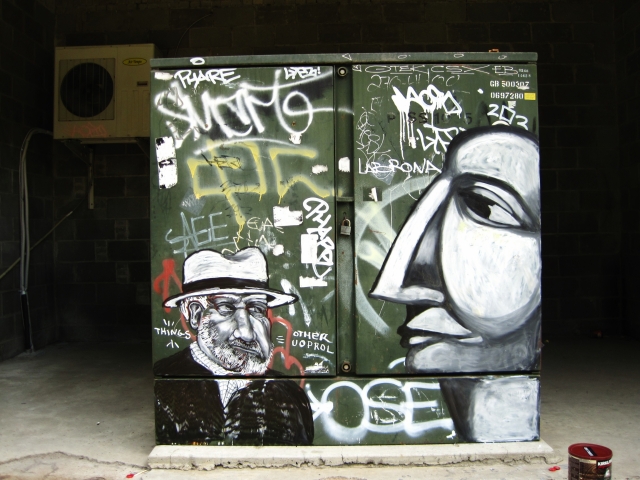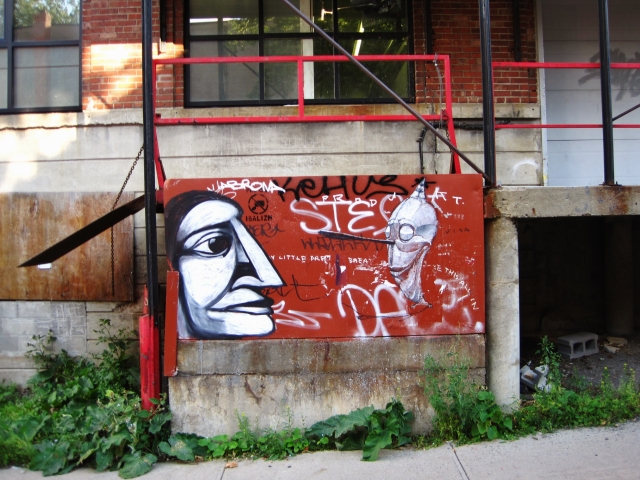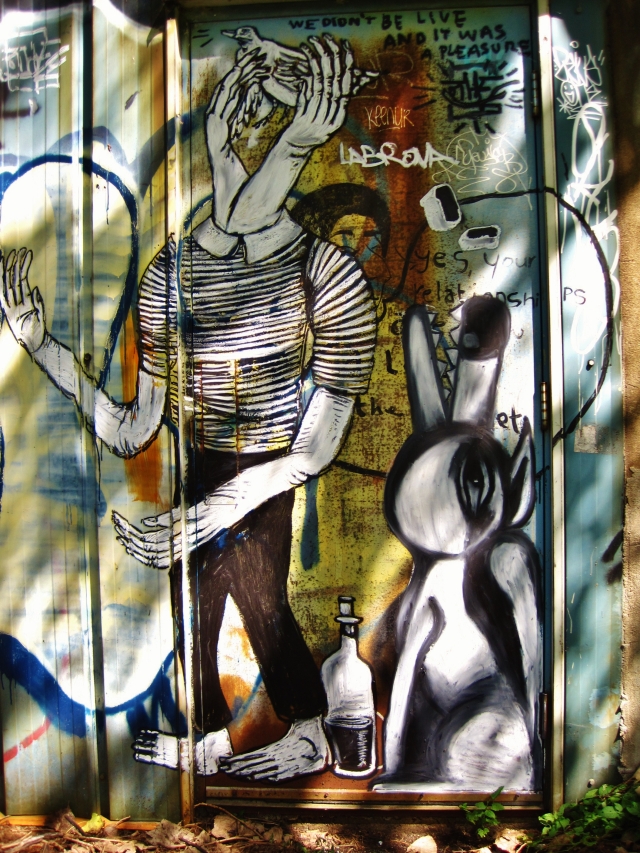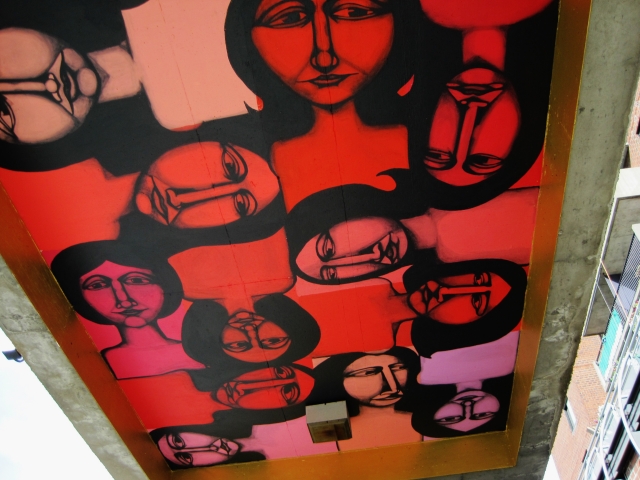
Editor’s note: Today we have a guest post from Yoav Litvin, a photographer and documenter of street art and graffiti in NYC. I’m really excited for Yoav’s upcoming book which profiles 46 of New York City’s most prolific street artists. In the mean time, for more on Yoav you can follow him on Instagram or check out these interviews. – RJ Rushmore
Knowingly, but most likely unknowingly, ekg is a part of every New Yorker’s life. ekg’s iconic orange symbol can be found on any surface in almost any neighborhood throughout the boroughs. ekg recently presented alongside Rubin, Hellbent, See One and Col at “Spectrum: Abstraction Through Aerosol”, a group show at Gallery Brooklyn curated by Royce Bannon. Luckily, I was able to catch up with ekg and ask some questions.
Yoav: What does the EKG symbol mean to you?
ekg: it is an illegal aesthetic manifestation first and foremost, but also contains other layers as a poetic symbol packed with a plurality of meanings: manifestations, transmissions, heartbeats, apparitions, illuminations, emanations, palpitations, resonance, signals, chimeras, missives, wraiths, pulses, blips…
i actually started doing it on the street before i was sure what to call it. at first i was thinking about it as a metaphor for visual communication on the streets, about the idea of a signal, a communicative mark, a transmission, a blip on The System’s radar, embedding Coordinates of Dissension in the matrix, occupying mental and physical space, connecting people and creating community on an alternative anti-status quo wavelength of rebellion and revolution. but when a friend hash tagged it “ekg” on her feed, it struck me that it gave the symbol another layer of meaning that was more personal and emotional. something people could connect to because it’s just a simple sign spread across the city becoming in essence a vast visual representation of the heartbeat of the city, a voice of the people, a pulse of the populace.
the following paragraph is the most precise statement i have crafted so far about illegal public marks, so i want to throw it in here. it is the intro to an essay that was published on graffuturism.com:
illegal aesthetic manifestations create connection, communication and community as they splice, transmit and mutate through the aetherial circulatory system ad infinitum. go all-city, all-universe, all-time-and-space. bomb the semiotosphere! revel in the power of the tag, the human mark, the identity avatar, the monitored action, the new millennium painterly gesture. david flinging pebbles at goliath.
it’s important to have rebellious signs present in the semiotosphere for the future of our urban environments, otherwise everything is perceived as under control, free of dissent, sedated. quantity and dispersion are crucial for the power of a tag, so I’m just constantly walking for days at a time. at one point, i started feeling like johnny appleseed sprinkling tags all over the place like seeds, hoping they take root and grow (attract other tags) not only in their physical spots but also in the consciousness of those that see them. tags are small but powerful in quantity. so if people actually notice, they start wondering what it means. especially if it’s just a simple symbol, it retains some mystery. what does it mean? why is it so important to this person to do all this work to make a public visual statement with it? any illegal public mark is an anti-status quo irruption, which is always appreciated, but if you do it enough, it can become an insurrection. One symbol can become an army. One word a manifesto.

Yoav: When, where and why did you start getting up?
ekg: i grew up in nyc surrounded by graff. i tagged in high school like any other rebellious artist kid just for fun and attention. but i wasn’t really cut out for it at that time due to being a somewhat reclusive introverted anxious paranoid high-strung personality type. but after gaining more life experience, becoming more comfortable in the world, and exploring some other forms of art, i returned to it in 2003 after i watched the twentieth anniversary release of Style Wars. seeing all the interviews with my heroes all grown up and just living their lives, took some of the mythological gauze off my eyes, and i realized that i could do it too at this point. this time i’ve become obsessed and driven by the movement becoming committed to it as the most powerful means of expression at the turn of the twenty-first century.

Yoav: How does your work interact with the diverse setting that is New York City? How does it feel tagging in other locales?
ekg: for me, going all-city is a crucial aesthetic element of being a graffiti writer or street artist. if someone sees your tag in every neighborhood, the geographic expansiveness creates a sense of omnipresence that is crucial to the power of the mark. going all-city could also be read as making the statement that you are all inclusive, not just trying to reach one kind of person or audience. going to different neighborhoods and cities is also just part of the fun. surfaces can be very different from neighborhood to neighborhood, city to city. since i don’t do any kind of public speaking or interviews, i feel like it’s one of my ways of connecting and communicating. although, i have also gotten pretty obsessed with instagram lately too lol.

Yoav: Your tag is all over! How do you decide where to tag?
ekg: placement is crucial. because the pulse is so simple, an important part of the aesthetic is to paint it somewhere so it fits with the spot. i started out doing the pulse very low at first just because those spots are always free. but the more I did them the more i liked the placement as a metaphor for “downlow” or “underground,” which is what i consider this whole movement to be about: an anti-status quo collective of individuals who en masse speak for the alternative-minded citizens of a city. also another important aesthetic element is that the transmission lines which extend out on the left and right of the pulse imply continuation ad infinitum, hopefully giving the impression that they all connect together across the urban environment.

Yoav: What inspires you?
ekg: friends, family, graffiti, street art, heavy metal, punk, science, semiotics, philosophy, sit-coms, sci-fi, technical manuals, text books, laboratory experiments, comic books, abstract expressionism, experimental writing, visual poetry, clean simple foods, swimming. also see my fav artist list below.

Yoav: How does it feel to present your work in a gallery? What were some of the challenges you faced? Any thoughts about the movement of street art and graffiti into galleries?
ekg: street has become the heart and pulse of what I do. when looked at from that vantage point, the gallery becomes merely a place for embellishment. but a gallery does offer a different kind of space for reflection and depth if used to it’s advantages. otherwise, it just becomes a store to sell product, which is important too for making a living, but a gallery can be so much more, an experience, a library, a museum. as i refine theoretical ideas about key causes, impetuses and effects of graffiti and street art, i am starting to think about different ways to apply the ideas to a gallery exhibition, rather than just hanging paintings. what are the algorithms behind the creation of graffiti? what are the core truths within the machinations of art placed on the street? how they can they be expressed in a white box environment?

Yoav: Any thoughts about the graffiti/street art divide?
ekg: in every community there are sub-cultures of like-minds that band together over ideals, protocols and procedures. in the late sixties, “graffiti” kicked it all off; in the late seventies, “street art” tried to be all inclusive. but for a lot of writers it was seen as gentrification and piggybacking, so for many people the two remain exclusive. yet there are more and more crossover artists and hybridizations as time goes on. i don’t do letterforms and have no style, so that falls into the street art category. but then i mainly operate like a graffiti writer because i like to tag and spray paint more than do wheat paste or stickers. maybe there will be another term someday that can sum up the whole movement while leaving the subcultures in tact and unoffended.

Yoav: Do you have a formal art education?
ekg: i was a terrible high school student. always distracted, drawing, and running around the city or just depressed and hiding out. but then did well in college. i first studied writing and literature, then painting and cartooning. i have taken a random class here and there after college, but tend to challenge myself a lot anyway without the need for outside impetus. silly things like setting a 2-hour time limit to read gary panter’s jimbo in purgatory a second time. but also just in my own expectations in terms of the depth and originality i would like to achieve in my body of work over the years. i probably would’ve loved to be a teacher of some sort, but due to pathological stage fright, i just didn’t see it as an option. unless i wanted to feel like i was being ambushed and tortured everyday.

Yoav: Any favorite artists?
ekg: futura, rammellzee, phase2, ee cummings, aesop rock, david lynch, gary panter, mark beyer, arshile gorky, matta, de kooning, basquiat, joel-peter witkin, jean baudrillard, tony oursler, harmony korine, harvey kurtzman, art spiegelman, david foster wallace, howard finster, melvin milky way, adolf wolfli, 907 crew, matt siren, cash4, aa crew, krt crew, ngc crew, lava 1&2, amrl, lsd-om, riff170, comet, blade, rime, os gemeos, faust, raven, sonik, freedom, zephyr, ket, ghost, noxer, espo, twist, reas, neckface, smart crew, btm crew, dick mama, choice royce, el celso, abe lincoln jr, skewville, overunder, michael alan alien, cosby, wisher, krasty, tonetank, poesia, mare139, part2, jurne, gorey, pal crew, sen4, zaone, hound, club clout, decoy, ur, stor, chef pants, atak, hert, snoeman, enrico letter, and so many more…

Yoav: How do you see your role as a street artist within society?
ekg: basically, i just want to continue to consistently do work on the streets and spread the word. i’m just another responsible citizen performing my role and doing my duty. the transgression of illegal aesthetic manifestations is a kind of civil disobedience, not just a misdiagnosed adolescent megalomania. we all don’t communicate in the same ways from individual to individual, but also from generation to generation. obviously this is the way we are wired in this day and age, or else it wouldn’t be the biggest movement at the turn of the new millennium.

Photos by Yoav Litvin








